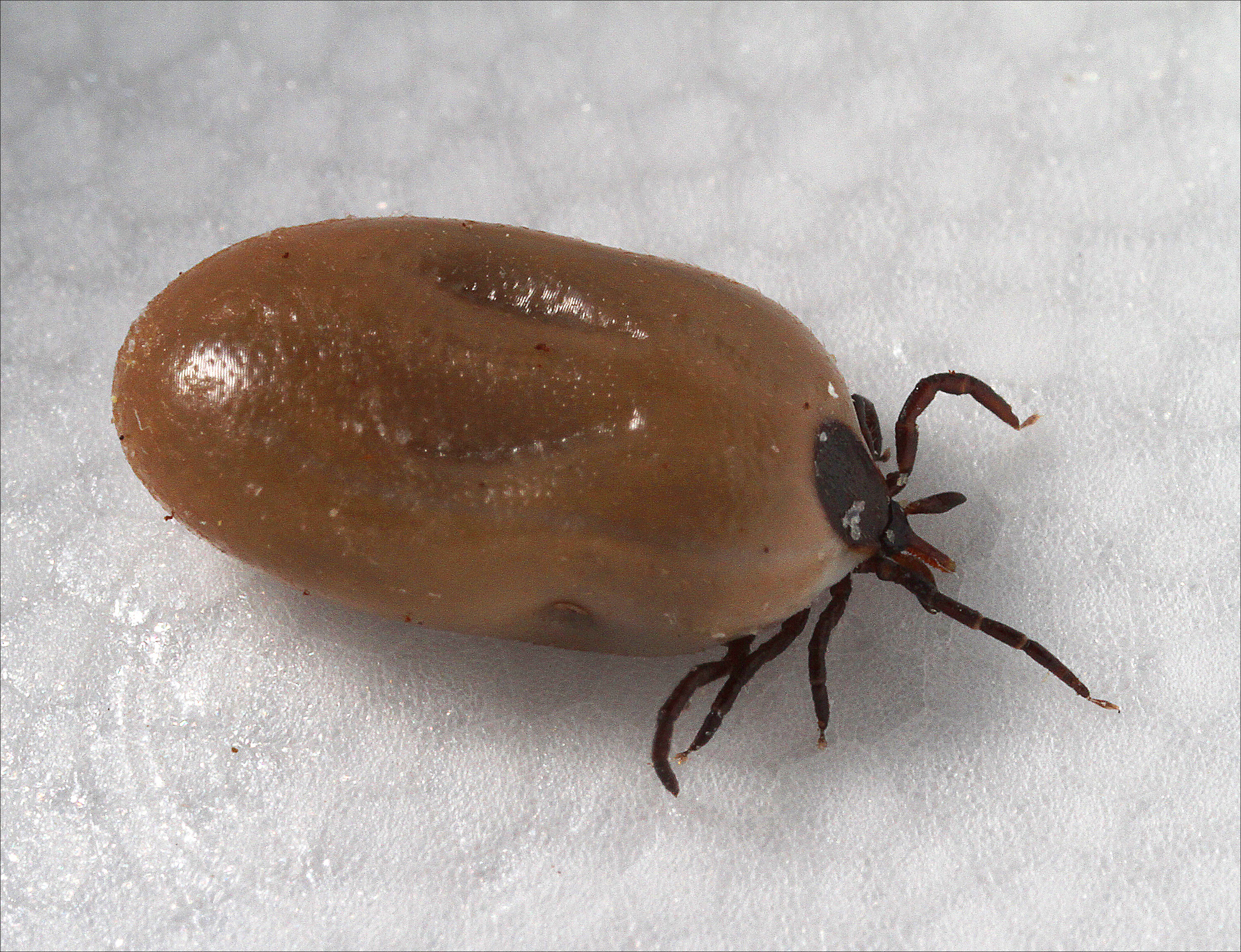Connecticut infant contracts rare Powassan virus from tick bite
An infant boy in Connecticut contracted the rare Powassan virus after he was bitten by a tick likely carried into the house by a relative, according to a CDC report.
The boy, aged 5 months, was the first person in state history reported to develop Powassan virus disease, an illness similar to tickborne encephalitis that is fatal in approximately 10% of cases and often causes long-term sequelae, researchers wrote in MMWR.
According to the report, the boy was hospitalized early last November with symptoms that included fever, vomiting and right-sided facial twitching. The twitching progressed to seizures that included rightward eye deviation and right arm stiffening, the researchers wrote. The boy’s parents reported that he had been bitten 2 weeks earlier and estimated that the tick was attached for less than 3 hours.

According to the report, Powassan virus can be transmitted to humans in as little as 15 minutes by several tick species, including the blacklegged tick (Ixodes scapularis), a common vector of Lyme disease. The researchers said a median of seven cases were reported in the U.S. from 2006 to 2015, mostly in the Northeast and Great Lakes regions. Minnesota, New Hampshire and Virginia also have reported their first cases in the past 7 years, although the researchers said it was not known if this is due to the virus spreading in local tick populations or an increase in testing for the virus and awareness that it can cause disease in humans.
Nicholas Bennett, MB BChir, was the attending infectious disease specialist at Connecticut Medical Children’s Center in Hartford, Connecticut, who ordered that the boy be tested for evidence of infection with Powassan virus. Bennett, who co-authored the MMWR report, said several clues indicated the boy may be infected with Powassan virus. It was past mosquito season, making mosquito-borne encephalitis less likely. Additionally, the boy had a confirmed tick bite and his MRI results were more consistent with a diagnosis of Powassan virus disease than some other causes of encephalitis.
Bennett went to medical school at the University of Cambridge in England but did his pediatric residency and infectious disease fellowship in Syracuse, New York, where Powassan disease has been reported.
“I hadn’t seen it before,” Bennett told Infectious Disease News, “but the people who trained me had seen a case, and so it was something that I was aware existed. There had been reports of Powassan in ticks in our state, so I knew it was a possibility.”
According to Bennett and colleagues, a cerebrospinal fluid sample taken 4 days after illness onset was positive for Powassan virus. The boy’s seizures were controlled with fosphenytoin and levetiracetam, and he was discharged after 7 days on oral levetiracetam.
A month after symptom onset, the boy’s parents reported that he was no longer able to sit up without help, which he was able to do before the infection, according to Bennett and colleagues. At age 10 months, he was reported to have reached the normal milestones of crawling, walking with a walker and babbling, but showed a left-sided preference, they said. The boy was no longer receiving therapy or being given antiepileptic medication.
Bennett said the boy’s left-sided preference is “almost certainly” due to damage to the left side of his brain — which controls the right side of the body — being slightly worse than on the right side. He said residual symptoms occur in about half of patients with Powassan virus.
“It doesn’t really matter where the tick attaches, since the infection travels through the body,” Bennett said. “It is common for people affected by Powassan to have some residual symptoms afterwards, but what exactly they have varies from patient to patient. It could be one side or another — or both sides — or arms but not legs. It’s not a simple pattern.”
According to Bennett and colleagues, an MRI performed after 4 months showed early scar tissue forming in the deep areas of the child’s brain where the infection was first seen and damaged nerve cells.
They said the case highlights the importance of considering Powassan virus disease in patients with a clinically compatible illness and obtaining a comprehensive exposure history. They recommended that clinicians specifically request testing for the virus, which is not usually included on arbovirus encephalitis panels. – by Gerard Gallagher
Reference:
Tutolo JW, et al. MMWR Morb Mortal Wkly Rep. 2017;doi:10.15585/mmwr.mm6615a3.
Disclosure: The researchers report no relevant financial disclosures.
